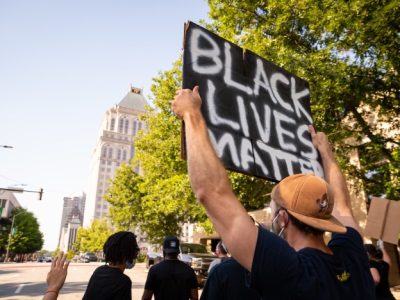The Guilford County school named for former North Carolina Gov. Charles B. Aycock —an ardent segregationist who spoke often about what he termed “the negro problem” — is 67 percent black.
Though in other aspects of civil rights, the old cracker was not quite so generous, he might have appreciated that demographic measure, as one of the concessions he allowed African Americans during his reign over Jim Crow North Carolina was “an opportunity for education.” Just not in the same building as white kids.
He used this phrase in his 1903 speech to the North Carolina Society, called “The Negro Problem,” which began with the claim that, under his tenure, the state had “solved the negro problem.”[pullquote]Aycock was, among other things, an active and admitted oppressor of every single black person living in his state during his tenure[/pullquote]
“I am inclined to give to you our solution of this problem,” he said to the room. “It is, first, as far as possible under the Fifteenth Amendment to disfranchise him.”
There’s quite a bit more:
“Let the negro learn once [and] for all that there is unending separation of the races, that the two peoples may develop side by side to the fullest but that they cannot intermingle; let the white man determine that no man shall by act or thought or speech cross this line, and the race problem will be at an end.”
Aycock was, among other things, an active and admitted oppressor of every single black person living in his state during his tenure — 1901-05, which means, yes, he was a sitting governor when he made these remarks. They came just five years after the Wilmington Race Riot, in which armed white insurgents — from Aycock’s political party — overthrew the city’s duly elected government just a single generation removed from the Civil War.
Racial relations in NC took a precipitous decline with the advent of Jim Crow and the abrupt termination of the fusionist experiment in multiracial democracy in 1898. Aycock and his cohort were directly responsible for just about all of it.
The Guilford County School Board’s decision last week to rename Aycock Middle School — commendable and, with a 9-2 vote, decisive — acknowledges the taint to the Aycock name. And more than that, it takes a stand against those who would whitewash the man’s legacy.
Aycock was more than just a peripheral player in the white supremacy movement of the 1900s; he was a leader, an integral part of the culture that established the framework for Jim Crow. His influence visited agony among a full third of his state — the black population of NC at the time. He was a villain who managed to get himself elected to office, more fittingly despised than celebrated.
And when they rename the school for an African American — for it would be a huge missed opportunity not to — it won’t end institutional racism, not even at the school itself. But at least two-thirds of the students won’t have to go to a school named for a person who didn’t think they should be there.
Join the First Amendment Society, a membership that goes directly to funding TCB‘s newsroom.
We believe that reporting can save the world.
The TCB First Amendment Society recognizes the vital role of a free, unfettered press with a bundling of local experiences designed to build community, and unique engagements with our newsroom that will help you understand, and shape, local journalism’s critical role in uplifting the people in our cities.
All revenue goes directly into the newsroom as reporters’ salaries and freelance commissions.





Leave a Reply